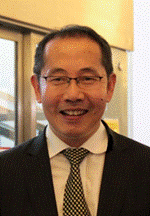报告人:Prof. WU Wei (吴伟教授,维也纳自然资源与生命科学大学)
报告时间:2024年6月12日(星期三)15:00-16:00
报告地点:深圳大学沧海校区致理楼L1座10楼1007会议室
主持人:陈湘生院士院长
主办单位:
深圳大学土木与交通工程学院
深圳大学未来地下城市研究院
极端环境岩土和隧道工程智能建养全国重点实验室
滨海城市韧性基础设施教育部重点实验室
深圳市地铁地下车站绿色高效智能建造重点实验室
报告人简介(About Speaker):

Prof. Wu is director of the Institute of Geotechnical Engineering at BOKU-University, Vienna, Austria. He received his PhD from Karlsruhe University, Germany in 1992. Afterwards, Dr. Wu entered the cut-and-thrust world of engineering consulting. He joined Lahmeyer International Ltd in Frankfurt, Germany in 1992. In 2002, Dr. Wu moved to Electrowatt Infra Ltd in Zurich, Switzerland. During his time at Frankfurt and Zurich, Dr. Wu had worked on some major industry projects of the world, e.g. Metro Athens, Greece and Gotthard Base Tunnel, Switzerland. In 2003, he was offered the chair professor at BOKU. Prof. Wu is the founding editor and editor-in-chief of Acta Geotechnica (创刊主编),an international journal for geotechnical engineering and the Springer Series for Geomechanics and Geoengineering. He has coordinated some large research projects funded by the European Commission in its 6th, 7th FP and Horizon 2020. Moreover, he serves as the board chairman of the Otto Pregl Foundation for Fundamental Geotechnical Research based in Vienna. In 2024 he received the prestigious Advanced Grant from the European Research Council.
报告简介(Introduction):
In geotechnical engineering practice, some techniques have been developed to handle poor ground by improving their properties. We present some recent research on ground improvement techniques. In particular, we consider the epoxy resin grouting, slurry wall installation, deep mixing and impulse compaction. The epoxy grouting is studied by model test. The stiffness is inferred from plate load test and SPT. We consider the discontinuity of slurry wall by simulating the installation. A major concern in deep mixing is the wearing of the bits. We use a purpose designed device to study the mearing of mixing bits in coarse grained soils with different grain size, grain shape and angularity. Finally, we show a case study of ground improvement by impulse compaction. The densities before and after compaction are inferred from seismic measurements.